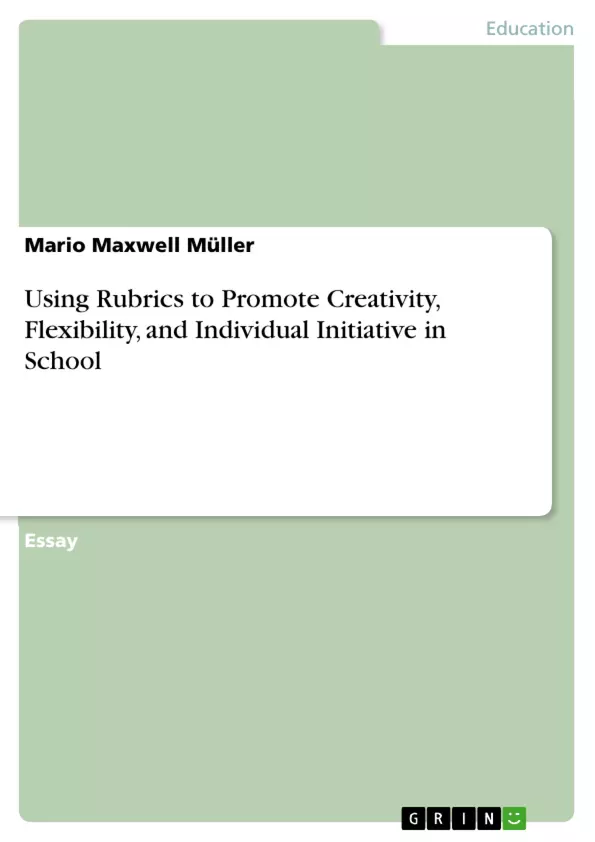The essay discusses how to use rubrics to generate artefacts that could discourage problem-solving, decision-making, and creativity. Assessments are one of the most important areas within a lesson, as it allows educators to make informed decisions on how to support the students further in the classroom. How to differentiate for them in their lesson planning and gain information that is crucial in understanding what areas of the content being taught need to be revised and adapted accordingly. The second part of this paper will evaluate rubrics the teacher uses to promote creativity, flexibility, and individual initiative.
Table of Contents
- Rubric scores and the importance in assessments
- The conundrum of using rubric scores with examples
- Analyse the statement from Chapman & Inman (2009): “scoring rubrics discourages creative thought and action” (para, 1).
- It guides the students,
- It outlines the explicit expectations,
- It aligns with the standards, and
- It is easy to use, and
- You will receive informative feedback from your students (Chapman & Inman, 2009).
- The disadvantages of using rubrics to promote fair grading could involve:
- The University of Oklahoma (n.d.), encourages the use of both analytical and holistic rubrics, by motivating teachers to consider the following when creating rubrics:
- According to Suskie (2009), the rubrics:
- Examine whether rubrics that are used allow for ´creativity', 'flexibility, and 'individual initiative'
Objectives and Key Themes
This essay aims to critically analyze the use of rubrics in assessments, exploring their potential benefits and drawbacks in fostering student learning, creativity, and individual initiative. It examines the conundrum of using rubric scores and their potential to discourage problem-solving, decision-making, and creativity.
- The use of rubrics and their potential to promote creativity, flexibility, and individual initiative.
- The importance of aligning rubrics with learning objectives and standards.
- The impact of rubrics on student motivation, engagement, and self-improvement.
- The challenges and limitations of using rubrics in assessment.
- The role of rubrics in supporting inquiry-based learning and the development of critical thinking skills.
Chapter Summaries
- The essay begins by introducing the conundrum of using rubrics in assessments, questioning whether they can encourage creativity and critical thinking. It highlights the importance of aligning rubrics with learning objectives and standards in the context of inquiry-based learning.
- The paper then examines the advantages and disadvantages of using rubrics for grading. It explores how rubrics can guide students, outline expectations, and provide informative feedback, but also discusses potential drawbacks such as over-emphasizing specific skills and limiting student creativity.
- The essay emphasizes the importance of considering the purpose of rubrics, the type of rubric used, and the inclusion of clear descriptors when developing them. It highlights the potential of rubrics to help students understand expectations, improve self-assessment, and inspire better performance.
- The paper concludes by examining how rubrics can be used to promote creativity, flexibility, and individual initiative in the classroom. It argues for the need to provide clear expectations, detailed assessment criteria, and opportunities for students to reflect on their learning.
Keywords
The key terms and concepts of the work are: assessments, rubric, creativity, flexibility, individual initiative, inquiry-based learning, critical thinking, assessment criteria, student performance, feedback, and educational technology.
- Quote paper
- Mario Maxwell Müller (Author), 2022, Using Rubrics to Promote Creativity, Flexibility, and Individual Initiative in School, Munich, GRIN Verlag, https://www.grin.com/document/1285153



